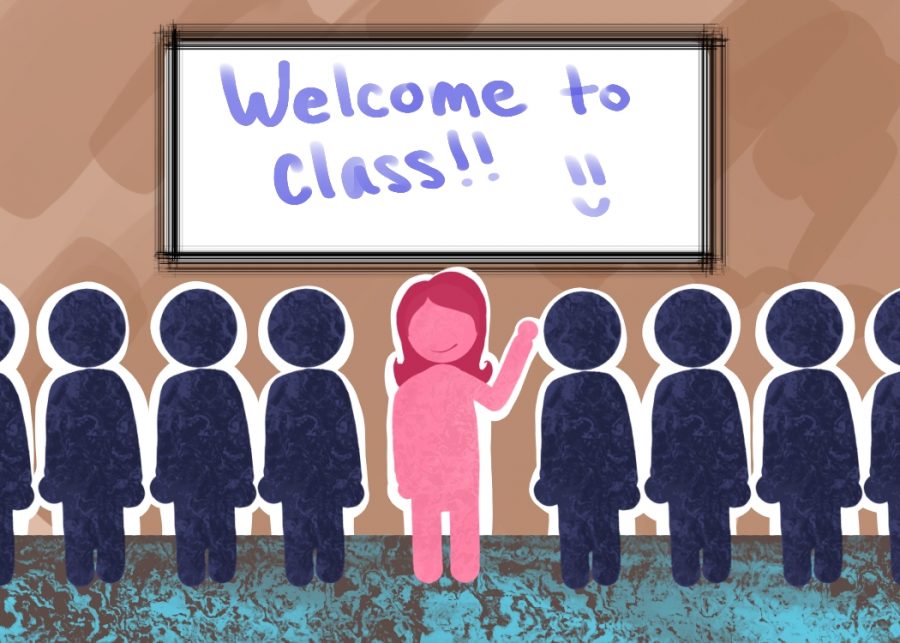Women in STEM need university support
WSU should change environments in STEM departments to be more welcoming for women
One survey shows that although the number of women earning degrees in engineering has increased in the past 20 years, women’s participation remains well below that of men at all degree levels and in all fields of engineering.
August 19, 2021
When I first started my master’s degree in engineering, I was one of the five girls in the class with 40 other male students. As I made my way through the doctorate program at WSU, the number of women only declined.
Many other women in the STEM program share circumstances similar to this at WSU.
Makenna Mullen, senior mechanical engineering major and president of WSU’s Society of Women Engineers said, “If I have a class of around like 80 people, I will have … maybe like five to ten other girls on a good day. So they were in there, but it’s just harder to find us.”
A survey conducted by the Society of Women Engineers in 2019 shows that although the number of women earning degrees in engineering has increased in the past 20 years, women’s participation remains well below that of men at all degree levels and in all fields of engineering.
A study of the gender gap in STEM fields from University of Bern and University of Basel in Switzerland shows that while health-related programs such as medicine and dentistry boast large numbers of women — as well as veterinary science, where 80 percent of students are female — engineering and the related fields of physics and mathematics are lagging.
STEM degrees at the master and doctoral levels have also increased among men and women, with female students earning a larger share of graduate degrees than at the bachelor’s level.
However, the gender gap is still large, with only 29 percent of master’s degrees in engineering and computer/information sciences awarded to women and 24 percent of doctoral degrees awarded to women.
This gender gap is often seen in North America and Western countries. In many countries with emerging economies, girls embrace tech. Where I grew up in India, people are encouraged to get involved with science-focused subjects as it leads to medicine and engineering which are seen as superior fields.
The key factors perpetuating these gender gaps in STEM are male-dominated environment(s) and culture(s), gender stereotypes, fewer role models, etc.
WSU could help break a few of these factors by changing the power dynamics to a more diverse, inclusive and respectful environment for women on campus.
When women engineering students first arrive on campus, they do not always feel welcome or safe.
In the classroom, female students are surrounded by men, including male instructors. When we are the only women in the room, we feel lonely. We feel intimidated.
A recent study published by American Psychological Association also found grim working conditions: one in two women feel disrespected on the job, one in three get paid less than men, and one in four experience discrimination, harassment or bullying. Women’s low ratios in these workplaces make it difficult for them to push back.
“I would say that even though your classes might seem scarce of people who look like you or come from similar backgrounds, there are communities out there to support,” Mullen said. “So just reach out and even if it’s just to your classmate, get a conversation started. It’s better to have a community behind you.”
WSU must emphasize the importance of having more female faculties in science, technology, engineering and math departments.
The university should also fund support groups for women as this could help build a community to rely on during the school year and after.
“When I first started at WSU, my mentor in the Honors College program was part of the Society of Women Engineers group. She encouraged me to join this community at the university, and it has definitely helped me build a support system that kept me going during hard times,” Mullen said.
It is also important to make the entire academic community — not just women — responsible for reducing and preventing sexual harassment, ensuring transparency and accountability, and supporting targets of sexual harassment.
The goal is to create an inclusive environment that will improve the retention of women in engineering programs and provide them with the necessary resources to thrive in school and their professional and academic careers.
“The resources that women need in graduate and undergraduate school are so different, and hence we started a new chapter at WSU for the graduate females, called the GradSWE,” said Ayumi Manawadu, fifth-year doctoral candidate in civil engineering and GradSWE president.
Student-led women’s groups on campus offer orientation and social and professional events to help newcomers feel welcome while helping erode engineering schools’ infamous bro culture.
There’s still a huge lack of support for these groups at the university level. A majority, if not all, of members in this group, are exclusively women.
In the end, the support for women is not just a women’s problem. The entire academic community (all men and women) should come together to establish an environment with gender parity and equality in STEM.

















